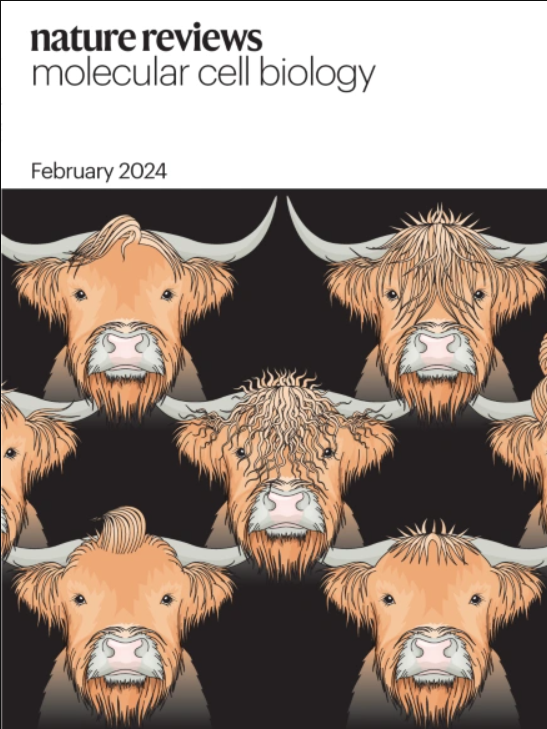Local and systemic mechanisms that control the hair follicle stem cell niche
IF 81.3
1区 生物学
Q1 CELL BIOLOGY
引用次数: 0
Abstract
Hair follicles are essential appendages of the mammalian skin, as hair performs vital functions of protection, thermoregulation and sensation. Hair follicles harbour exceptional regenerative abilities as they contain multiple somatic stem cell populations such as hair follicle stem cells (HFSCs) and melanocyte stem cells. Surrounding the stem cells and their progeny, diverse groups of cells and extracellular matrix proteins are organized to form a microenvironment (called ‘niche’) that serves to promote and maintain the optimal functioning of these stem cell populations. Recent studies have shed light on the intricate nature of the HFSC niche and its crucial role in regulating hair follicle regeneration. In this Review, we describe how the niche serves as a signalling hub, communicating, deciphering and integrating both local signals within the skin and systemic inputs from the body and environment to modulate HFSC activity. We delve into the recent advancements in identifying the cellular and molecular nature of the niche, providing a holistic perspective on its essential functions in hair follicle morphogenesis, regeneration and ageing. The regenerative abilities of mammalian hair follicles are facilitated by the proliferation of hair follicle stem cells (HFSCs), which reside in specialized niches within the skin. Recent studies shed light on how local signals and systemic inputs from the body and the environment regulate HFSC function.

控制毛囊干细胞生态位的局部和系统机制。
毛囊是哺乳动物皮肤的重要附属物,因为毛发具有重要的保护、体温调节和感觉功能。毛囊具有非凡的再生能力,因为它们含有多种体细胞干细胞群,如毛囊干细胞(HFSC)和黑素细胞干细胞。围绕干细胞及其后代,不同的细胞群和细胞外基质蛋白被组织起来形成一个微环境(称为“生态位”),用于促进和维持这些干细胞群体的最佳功能。最近的研究揭示了HFSC生态位的复杂性及其在调节毛囊再生中的关键作用。在这篇综述中,我们描述了生态位如何作为信号中枢,沟通、破译和整合皮肤内的局部信号以及来自身体和环境的系统输入,以调节HFSC活性。我们深入研究了鉴定生态位的细胞和分子性质的最新进展,为其在毛囊形态发生、再生和衰老中的基本功能提供了一个全面的视角。
本文章由计算机程序翻译,如有差异,请以英文原文为准。
求助全文
约1分钟内获得全文
求助全文
来源期刊
CiteScore
173.60
自引率
0.50%
发文量
118
审稿时长
6-12 weeks
期刊介绍:
Nature Reviews Molecular Cell Biology is a prestigious journal that aims to be the primary source of reviews and commentaries for the scientific communities it serves. The journal strives to publish articles that are authoritative, accessible, and enriched with easily understandable figures, tables, and other display items. The goal is to provide an unparalleled service to authors, referees, and readers, and the journal works diligently to maximize the usefulness and impact of each article. Nature Reviews Molecular Cell Biology publishes a variety of article types, including Reviews, Perspectives, Comments, and Research Highlights, all of which are relevant to molecular and cell biologists. The journal's broad scope ensures that the articles it publishes reach the widest possible audience.

 求助内容:
求助内容: 应助结果提醒方式:
应助结果提醒方式:


